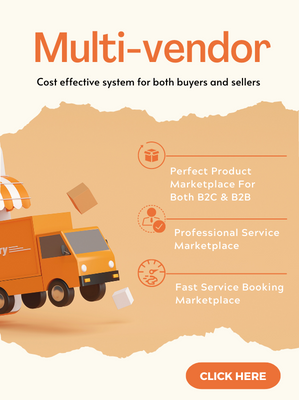Consumer electronics industry, like many others, is experiencing a certain amount of volatility, and even the most expert projections may be stymied by the unpredictability of today’s market forces. We’ve seen some incredible technological innovations over the last decade, but as we move into the 20s, what new developments await us? Here, we take a look at some of the top consumer electronics trends for 2021 and effective strategies the retailers need to do to get high profits
Consumer Electronics Trends 2021

1. Virtual reality
One of the consumer electronics emerging trends of 2019 has been extended reality or XR. 2021 is likely to bring more extended reality concepts and technology. Virtual and augmented reality video games have seen some enormous developments in the past year, with many popular games combined with the elements of VR or AR.
2. Augmented reality
Augmented reality could be the next huge computing platform in consumer electronics. Ultimately, AR glasses of some sort may take the place of the smartphone as the primary connected device. When the technology grows up, the location-based entertainment and in-app purchases will become more outstanding. Besides, new advances in smartphone hardware — such as 3D sensing cameras and AI chips allow developers to develop more forceful AR experiences utilizing devices many consumers and businesses already own.
3. Smart speakers
Recently every leading technology company is either already producing a smart speaker or a developing one. Many merchants launched smart speakers that are specially purposed yet also incorporate at least one of the dominant platforms — Alexa or Google Assistant. GlobalData believes that the global smart speaker installed base will hit over 300 million in 2021
4. Automated home
Automated home technologies such as speakers, TVs, fridges, ovens, washing machines, thermostats, lights, and security cameras, which connect through a hub. Smart speakers will increasingly work as a hub for automated home technology. By 2025, spending on smart appliances will hit $5.5bn, according to GlobalData.
5. Consumer drones
The technology advances in-flight technology, flight modes, and controls along with the improvements in portable photography and video technology lead to an explosion with amateur and professional photographers and videographers. By 2019, the latest numbers are expected to reach 2 million. Drone popularity among consumers isn’t predicted to stop booming anytime soon. Rapid and often conflicting changes to drone regulation will dramatically affect this evolution.
6. Consumer robots
Consumer robotics combines robots designed for entertainment, for companionship, or to implement domestic tasks. The fastest-growing segment will be household service robots. Social robots are a long way from mass adoption but have gained traction in Japan. The last two years have seen some players exit the consumer robotics market.
7. Autonomous driving
We’re still a way of being able to sit back in our cars and take a nap while the vehicle takes us to work on its own, but we can expect appreciable strides to be created in the technology in 2021. Electric and hybrid cars become more and more popular. Some countries already have committed to cease the production of new combustion engine vehicles in the near future.
8. Connected cars
CASE (connected, autonomous, shared, and electric) is the future of the automotive industry. Vehicle connectivity over the next two years will be driven by the implementation of the newest driving assistance systems. The two biggest consumer electronics trends in the coming years will be the arrival of 5G and the rise of cyberattacks on connected vehicles.
9. Personalized medicine
Medical technology has long been relying on innovation within electronics. Currently, more evolution has been made in electronic tattoos — thin, wearable electronics that can be worn on the skin to monitor vital signs such as heart and brain functions and transfer that data to a smartphone or computer for real-time health analysis.
10.5G smartphone
One of the consumer electronics trends that people have been discussing for some time now is 5G. 5G smartphone remains a priority for all smartphone OEMs despite the challenges with the Covid-19 pandemic and lack of consumer demand. 2019 saw EE, Vodafone, Three, and O2 all roll out their 5G networks in the UK, and in 2021, we can expect more mobile carriers to follow suit, as well as 5G being rolled out in other countries.
Effective strategies for Consumer Electronics Shop

Consumer electronics marketing can be overwhelming for managers and even executives. From the beginning, identify your audience and solidify your brand’s story. Once you’re digging deeper, there are a few critical strategies that might be easy to overlook but will change the game for your business.
1. Use a search engine that eases the search
Website’s catalogs in this sector are huge – so much so that they can discourage customers if a website’s structure is not well organized. How can you make it easier for potential customers? A professional search tool will be a great solution for your website. An enhanced website search can be faster, more accurate, and have added features like providing recommendations when the customer’s search may not find an immediate match. Even common occurrences like plural searches and spelling mistakes will be corrected.
2. Ease research process with relevant product information
Important to the electronics shopping journey is accurate, trustworthy, relevant information. After all, few customers would set out for a new 60” TV without understanding their facts. According to a recent survey, in the case of the 1,000 U.S. consumers, good product images or videos are baseline requisites. Listings with more bullets convert higher 55% of the time. Brand’s information that answers questions is most viral 61% of the time, whereas a popular or trustworthy name is only the most crucial 65% of the time.
3. Electronic pricing strategy
When it comes to selling electronics products, you need to capture both your pricing and marketing strategy. There is a lot of pricing strategies you should know about but when it comes to consumer electronics products, the best pricing approach you should regard is differing yourself from the market. When your brand becomes a brand and less of “a product” you are able to charge more. In the consumer electronics markets, your pricing fixes your branding. It’s why companies like Apple can charge almost $1000 for a phone. When your brand is solid, your prices product will increase.
4. Increase your average checkout price
One method to boost sales and profits is by increasing the average checkout price of the transaction. That’s to say, getting the consumer to add more products to their shopping cart for the same transaction. There are several methods to do so:
- Highlight your best sellers: The easiest methods to increase sales is by boosting what is already working. Don’t let customers leave without having a look at your most-sold products.
- Free shipping: A classic – provide free shipping on orders over a certain amount. If your customer is near to the cutoff, they’re likely to add something else.
- Rewards Points or Discounts: Provide discounts for spending more money or purchasing additional products
- Provide related- items to the one they’re about to purchase: You can even show them as a banner of “commonly bought together” or “other clients also bought” as Amazon does.
Note: If you want to learn more strategies to increase the average order value, have a look at this post where we explain everything you need to know.
5. Customer-created content
The best marketers of your product are your customers and this is true in the consumer electronics industry too where businesses can make benefits from using their customers content to further explain why it’s a great idea to purchase it. For this reason, using user-created content (UGC) is an effective strategy to showcase exactly that. Not only that but tagging your content with their social handles is an option to give back to the people who take the time to wax lyrical about items.
6. Value matters more than the price
When it comes to consumer electronics, the lowest price is most viral just about half the time. That said, customers need value. While the MSRP keeps marginally the same, brands can sate the value need by providing bundles—protective sleeves. headphones, and other accessories with the purchase of a laptop, for instant
7. Curate reviews convert the sale
Even the most familiar companies can fall victim to a seemingly non-threatening up-and-comer if the customer reviews are more plentiful and more favorable. In fact, 75% of the time, the most crucial attribute customers seek while shopping is positive reviews, with most reading 5 or more reviews when buying electronics. If your product pages are lacking positive reviews, take a step back, and analyze why. Is the comment process hard or cumbersome? Has the feedback been requested from customers? Is the product not good? Whatever the case, reviews are important and a dearth is a red flag for customers
8. Cultivate strong customer loyalty
What happens when you purchase from an online store, your product arrives on time, the packaging is beautiful, and the customer service is always great? You purchase it again from the same shop. And that’s exactly what we call fostering customer loyalty. Here you have some methods to encourage customers to buy again:
- Enhance your customer service: For example, you could install a chatbot to answer customer questions 24/7 so they’re always getting the help they need.
- Guarantee the shipping: Work with a good logistics operator that can guarantee quality deliveries.
- Reward subsequent sales: Offer discounts for future purchases or related items.
Electronic products are high in demand in the online market. For beginners, launching g an eCommerce store with electronic niches can be a great profitable business.
9. Themes to Develop an online consumer electronics store
As you know, Magento has been the best choice when it comes to e-commerce platforms, especially for product-heavy online businesses. If you prefer to use a ready-made solution for your online electronic store development, you might like the idea to develop your website with an available electronic marketplace Magento 2 themes.
This September, Magesolution proudly introduces a new product: Gemmart- Marketplace Multipurpose Magento 2 Theme which is specially designed for the multi-vendor marketplace, electronics stores, mobile phones, tablets, digital cameras accessories…etc. This theme is the perfect choice for people who want to build a website like Amazon, Lazada, or eBay with a unique design.
Features:
- CMS pages builder: Allow stores to create unlimited CMS pages such as Homepage, Landing page, Content page, Intro page, product description, category description effortlessly and visually at the front-end
- Fast loading speed: Theme achieves a highest page speed score for theme speed optimization
- Product attribute swatches: Customers can use swatches on product color, size, material, manufacturers, etc.
- 360-degree product viewer which allows customers visualize products in the most realistic view
- Powerful extensions included: Ajax Quickview, Ajax Layered Navigation, Guest Wishlist, Instant Search, Lookbook, Mega Menu, Store Locator, GDPR, Blog, Shop By Brand, Mega Menu, Magento Portfolio, Product Tabs, Magento Banners, Catalog AJAX Scroll, AJAX Cart Pro.
Want to see more information on the Gemmart theme, let check it out via the Themeforest!
Read more:
Electronics products: The benefits and beneficial way to shop it online



